Spices 101: Storing Spices (Recipe: Black Pepper Shrimp)
If you’ve been following our Spices 101 series, you may have had some spice myths debunked, and also may have decided to invest in quality spices. Today, we’ll learn how to store your quality spices properly so that they’ll maintain their maximum freshness and potency.
It may come as a surprise to you, but a decorative spice rack conveniently situated above the stove is not doing your spices any favors. Sure the row of little glass jars are pretty to look at and the rack itself may be a space saver, but with all the heat, steam, gas and fallout from your cooking, your spices are no better off than the Icelandic cattle living in the path of the Eyjafjallajokull volcano spew.
OK, maybe a little better.
Here’s how to store everything from anise to za’atar.
What Your Spices Should Avoid
No sauna’s (or volcanoes) please! When storing spices, your biggest enemies are:
- Air
- Light
- Heat
- Humidity
What comes to mind? Can you think of someplace that’s airtight, dark, cool and dry? Read on!
The Best Kitchen Locations
- The Freezer. Ground spices retain their condition and quality best when stored in an airtight container in the freezer. Up to six months is recommended, but I keep some for up to a year.
- Inside a Cabinet Door. Here’s a visual tour of a lovely storage solution inside a cupboard door. This space-saving idea is fantastic for small kitchens.
- In a Drawer. Very convenient, but drawers are precious real estate in most kitchens. Drawer racks and jars are available from The Container Store.
- On a Pantry Shelf. This is where most of my mason jars of spices and dried herbs are stored. It’s cool, dark, and far from heat sources.
- Open Storage. If spices are sealed in tins, open shelving or counter-top storage is fine, as long it is not near a direct heat source.
Magnetized tins on refrigerator doors, while very visually appealing, are not ideal. Their glass tops expose the spices to light, while the fridge gives off heat; unless they are used up quickly, the quality of the spices will deteriorate rapidly.
Storage Tip: Keep your top 10 (or 20) most used spices handy in a cupboard at eye level and stash others out of the way.
The Best Storage Containers
- Tins. This is the best possible place for your spices; preferably tins without glass tops. These ones from Specialty Bottle are some of the most affordable I’ve found.
- Small Spice Jars. Ikea has affordable options.
- Carousel spice racks. These popular organizers are best stored inside a cupboard, away from sunlight.
- Mason Jars. Perhaps the most eco-friendly choice. Most of us have them hanging around, waiting to be repurposed. Perfect for herbs and spices of all shapes and sizes.
Labeling Tip: For quick turnover of spice varieties, identify your spices with a small paper or sawed off Popsicle stick and drop it into the jar along with the spices. When you’ve finished the jar and are switching ingredients, simply toss the label. No more time wasted scratching at a stubborn adhesive with your fingernail.
Recipe: Black Pepper Shrimp
A famous chef I once worked for was asked what his favorite spices were. His answer was quick and delivered with a smile: “Salt and Pepper”. His reply surprised me a bit, but now, having discovered the tantalizing scents of good quality fresh pepper, I understand.
Pepper doesn’t have to just garnish or complement a dish anymore; it can be the star ingredient. This shrimp recipe we enjoyed this week demonstrates just that.
Thanks to the Food Network’s Paula Deen for this simple and succulent recipe. Eat the shrimp with your fingers, and serve with a tossed green salad and a crusty baguette to sop up the garlic-pepper butter.
This dish is perfect for a relaxed Sunday supper or you could tip the entire pan into tin foil and pack it up for a deluxe picnic on the beach!
Don’t be shy with the pepper, you want to feel the heat and the full flavor.
Black Pepper Shrimp
Serves 4, generously
- 3 lbs (1.5kg) fresh shrimp, with shells on*
- 1 stick butter (1/2 cup)
- 3 Tablespoons chopped garlic
- 4 Tablespoons freshly ground black pepper (my current favorite is ‘Tribal‘ from India)
- Preheat oven to 450-degrees F. Rinse and drain shrimp, then place in a single layer on a shallow baking sheet. Set aside.
- Melt butter in a saucepan, add garlic and saute for 3 to 4 minutes. Pour garlic butter over shrimp and toss to coat.
- Pepper shrimp until well covered, then place in the oven and bake until pink (about 5 minutes). Turn, bake a few minutes longer, and pepper again.
- Serve immediately with plenty of napkins.
*Note: I used shrimp sized 31-40 (per pound).
How do you store your spices? Feel free to link to photos of your own spice racks, cupboards and drawers – we’d love to be inspired!

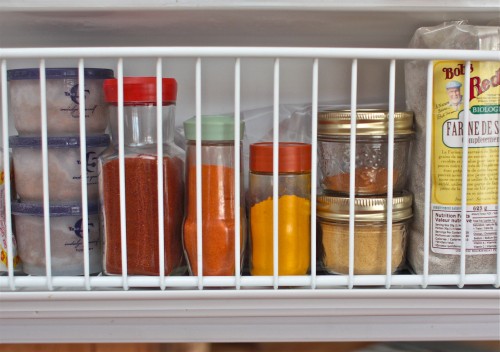
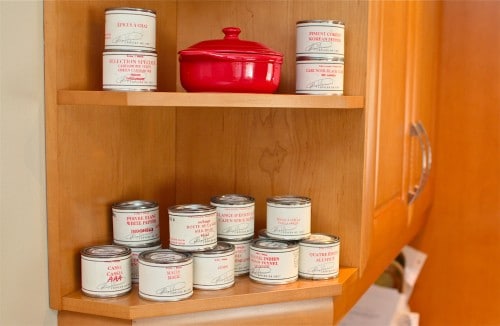
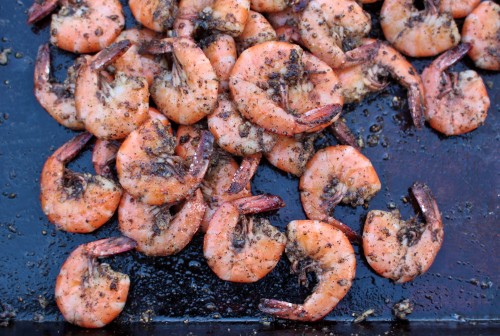
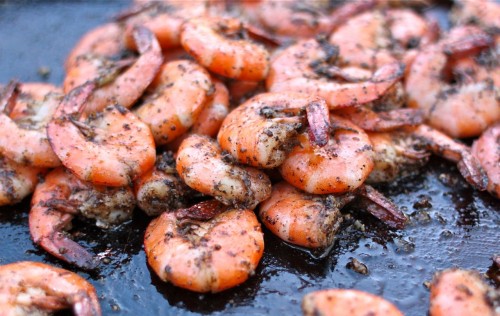
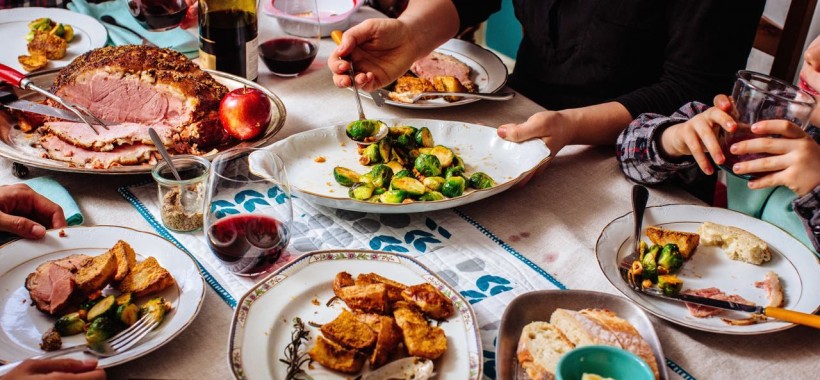

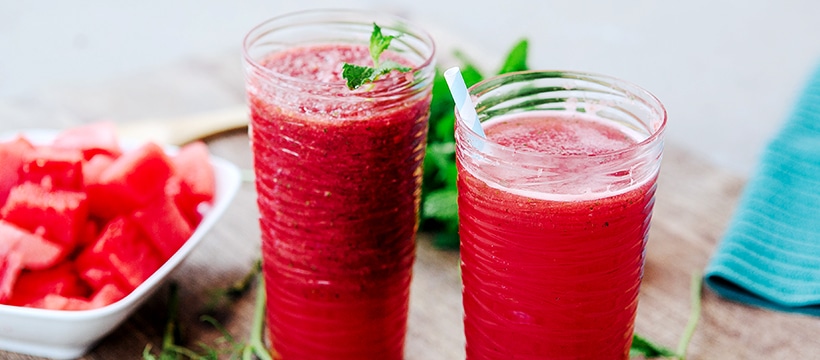
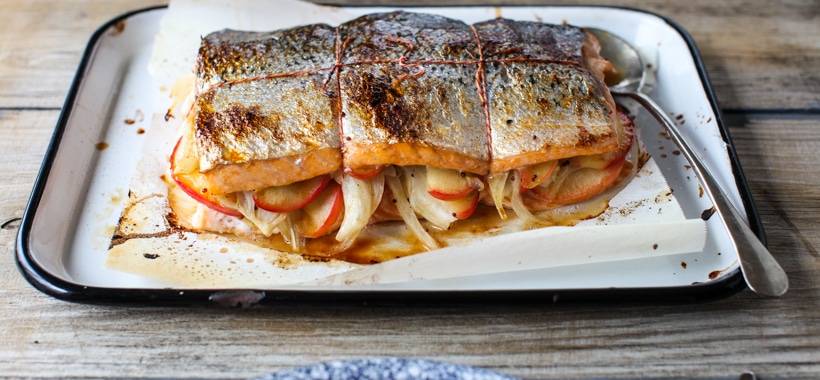
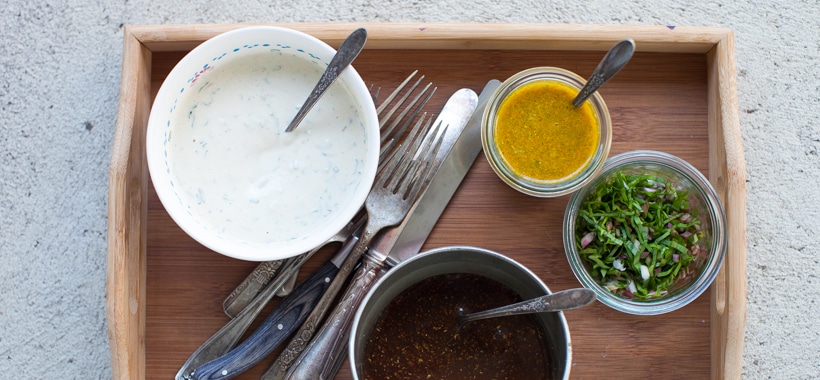
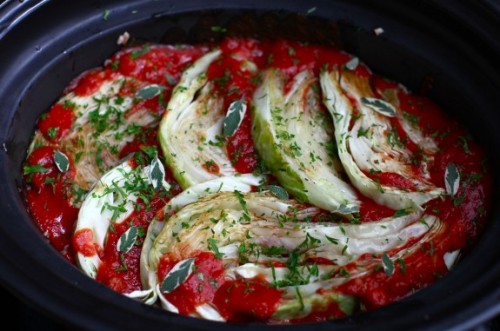
On the way to work this morning, my carpool friend and I were talking about salt and pepper shrimp that she got at a restaurant last night. I think she was expecting something along the lines of the recipe you posted, and not what she got: very salty shrimp, floating in butter, with whole hot peppers.
I’ll pass this recipe on to her because it looks AMAZING.
Awesome tips about the spices. I’ve been trying to convince my mother-in-law that keeping her spices on the counter is killing them, so I will forward this link on to her. Maybe you’ll be able to convince her.
.-= Amanda G’s last blog: Link Love :: Second Hand Furniture, a Recipe, and TV =-.
Thanks for forwarding the recipe, and yes, please do your MIL a favor and let me help her spice malfunction!
That shrimp does look mighty tasty!!
I store my spice in my pantry, but I think I’m going to move them to the freezer now. Thanks for the tip.
I found old baby food jars make for great storage of spices. I didn’t know about the light affecting them, though, so I may have to rethink that.
Thanks for the post!
Angela, baby food jars is a great solution–as long as they are in a relatively cool and dark pantry or cupboard.
Great storage advice…I love those tin jars (and their price)…must get some!
.-= Evelyne@CheapEthnicEatz’s last blog: WINNER of the Ice Cream Machine Giveaway =-.
Thanks, Evelyne. They are even cheaper bought in bulk, perhaps you could round up enough MTL foodies to go in on 10 dozen or so.
This was pretty good, but it was a pain to shell the greasy shrimp and the shrimp didn’t really take in the flavors…I’m going to get shelled/de-veined next time and see how that works…unless you think the shells ON make a difference in how they cook?
Hi Emily. Yes, this dish is a bit like those lobster bakes on the coast, you know, where they hand you a bib beforehand! Although, lobster meat is much more work than the shrimp.
I think the pepper would be too aggressive without the shells, but do let me know if you try it! I would definitely cook them for much less time, too.
I store most spices in the freezer, with a small working supply on a shelf in the kitchen. I love to use recycled jars for spices; because I teach classes in my kitchen and go through my spices very quickly, I don’t worry about deterioration because the spices aren’t around for long. Using small jars of different shapes lets me identify the spices at a glance by the shape of the jar, and I can see when the spices need to be replenished from the supply in the freezer.
.-= Lydia (The Perfect Pantry)’s last blog: Quinoa (Recipe: black bean, quinoa and red pepper salad with honey-lime vinaigrette) =-.
Excellent system, Lydia! I’ll bet you have a fantastic stash!
I keep my dried herbs in exactly the same IKEA jars you link out to in the article 🙂 I just place them on the pantry shelf. Works fine for me!
Looking at the 3rd picture… I get same at Jean-Talon Market all the time 🙂
I like how neat the little metal tin looks but did you know that glass is so much better for storing than in metal? Plus you can’t see the beautiful textures and colors.
We store our organic herbs and spices in the very short mason jars, in the pantry. I buy in small quantities online (I live in a really remote area so it’s more cost effective) and use them so frequently!
would anyone here be interested in a relatively low cost COOLED storage unit made for spices? i invented it and want to know if it is a viable product. it sits on the counter and shields lights, humidity and air from our glorious herbs. let me know….
I am interested in your product, and how it works…plus cost.
Hi! Thanks for the tips on storing spices, I have a big stash and I didn’t know how best to store them, you post really helped 🙂
Mmmmm this recipe looks delicious!!! Thanks so much for posting. My girlfriend and I don’t take any chances with our expensive spices and we store in Infinity Jars:
http://infinityjars.com/collections/spice-jars-and-bottles
They’re the absolute best for keeping spices fresh for long periods of time.
Thanks for sharing these excellent tips for spices storage. Spices often appear in the ingredient of a good chef so it is very important to preserve them in good conditions to make good use.